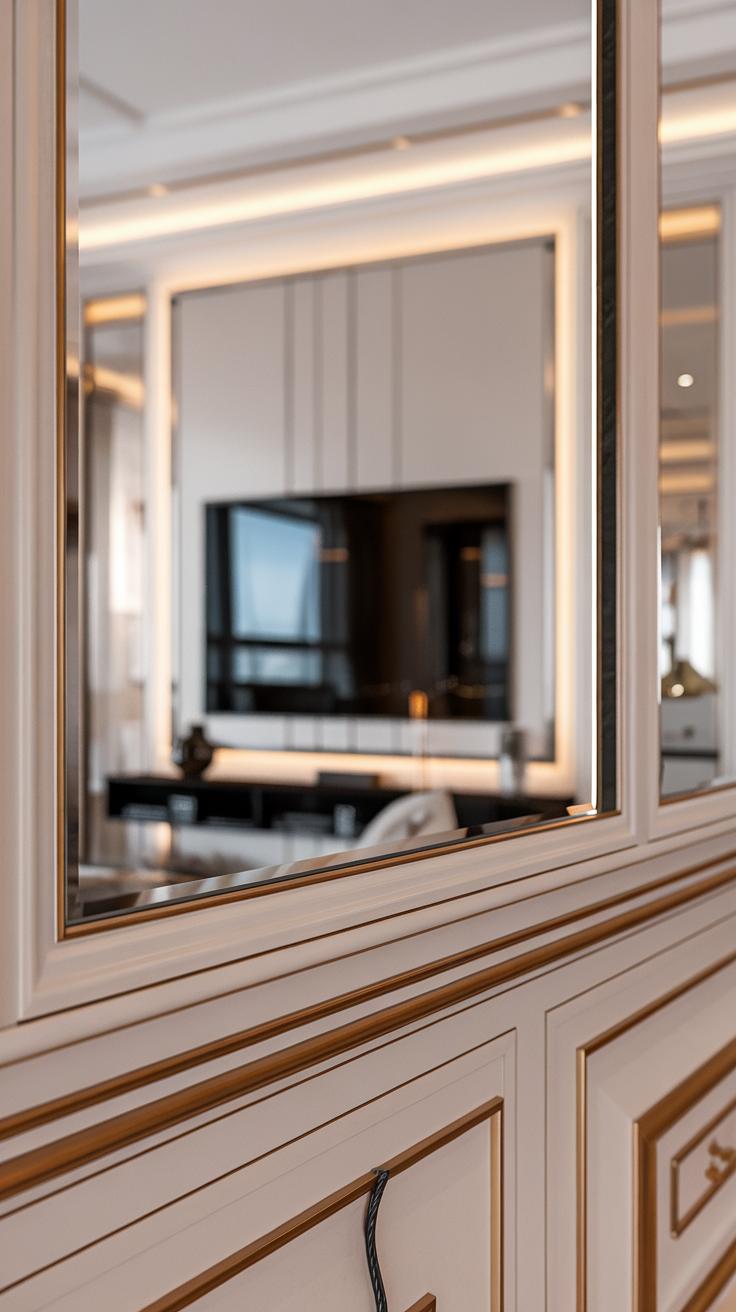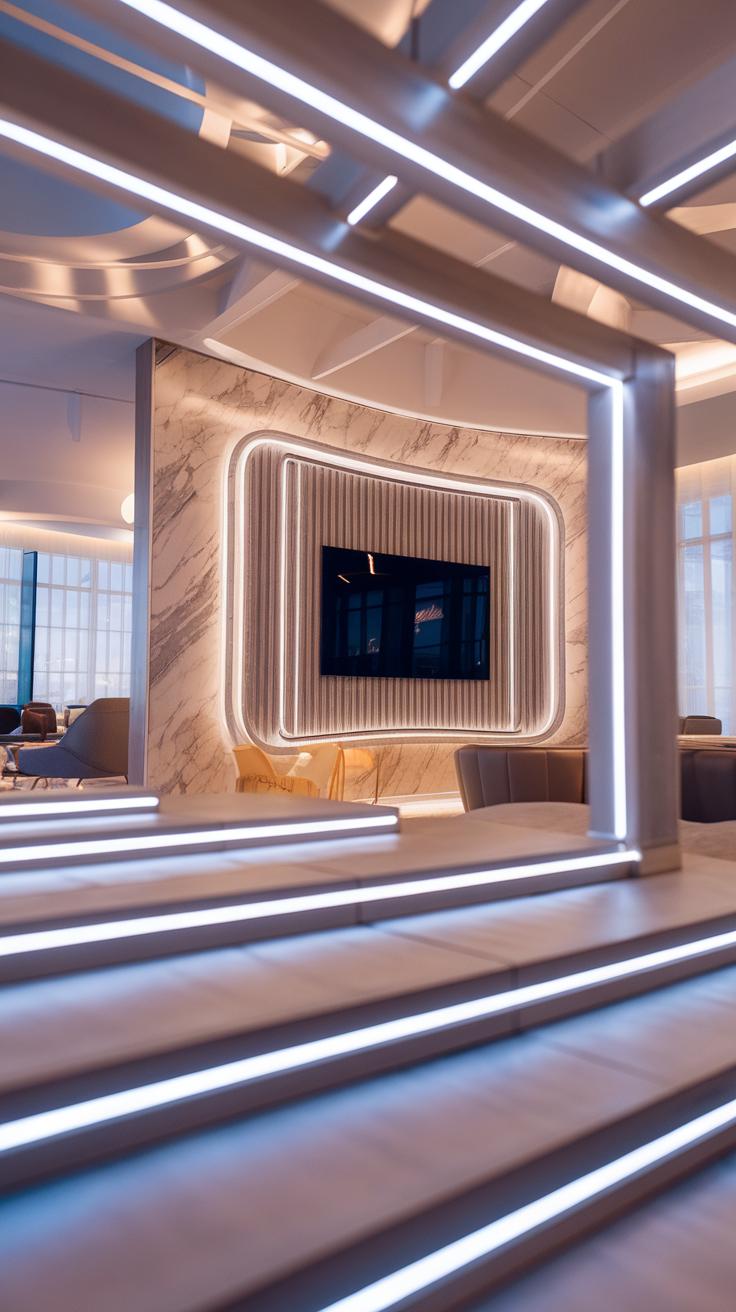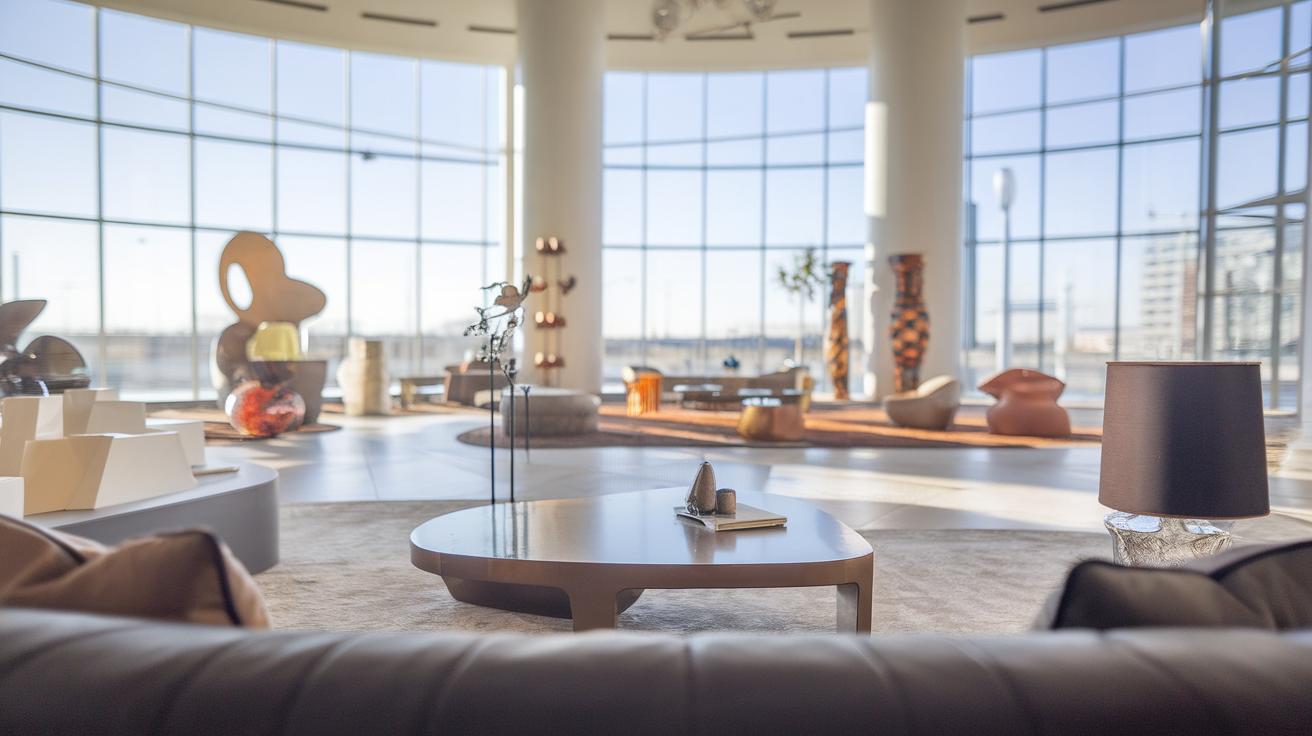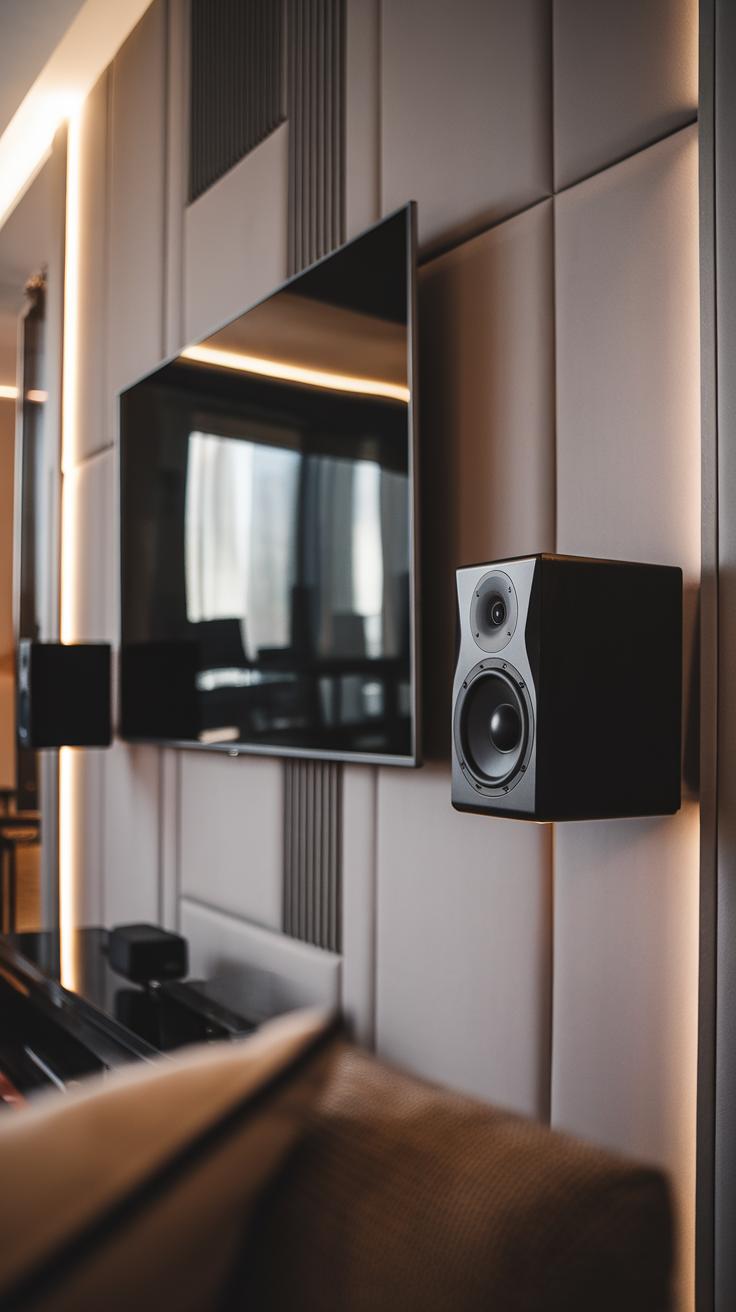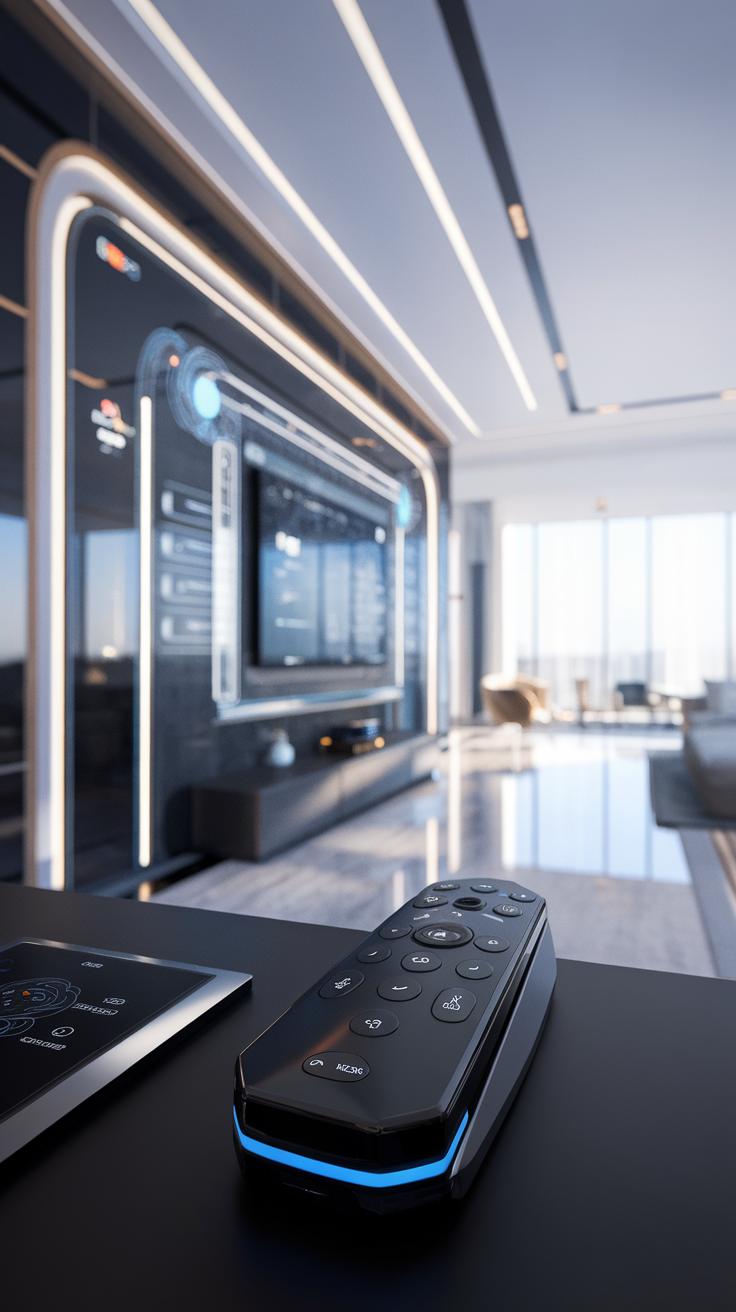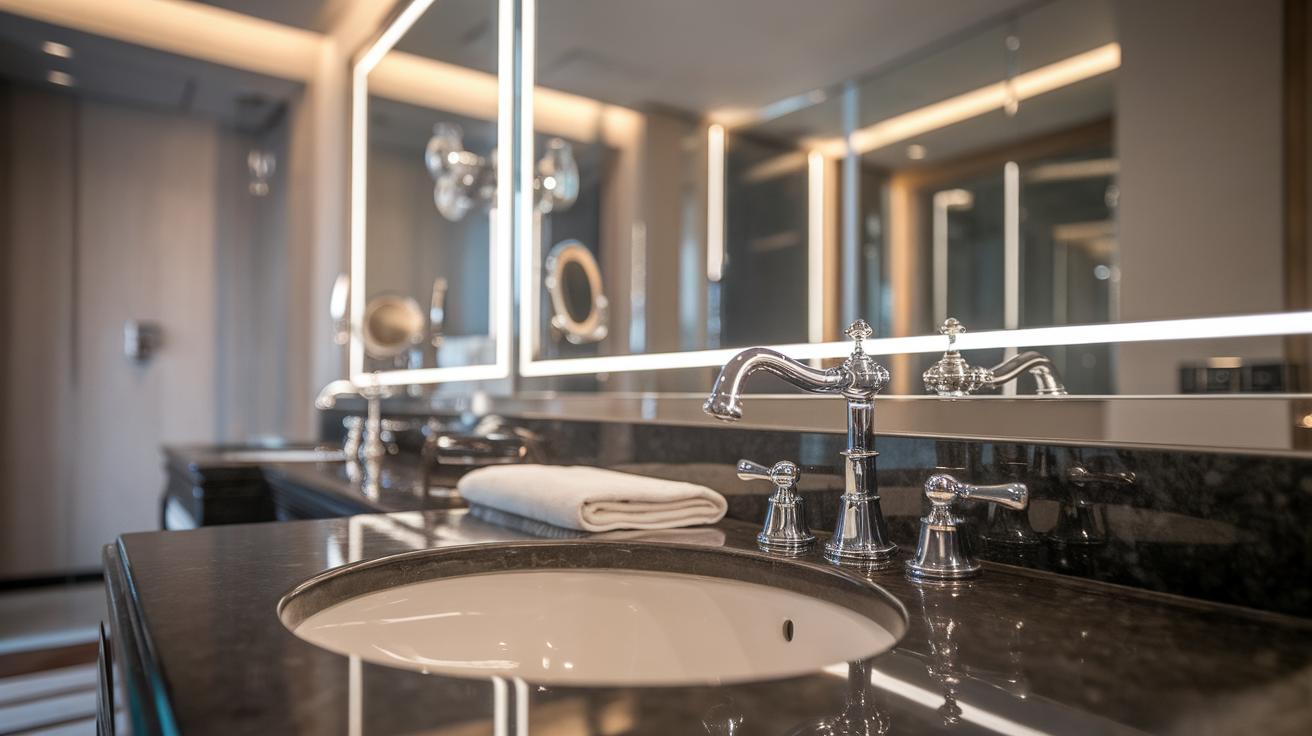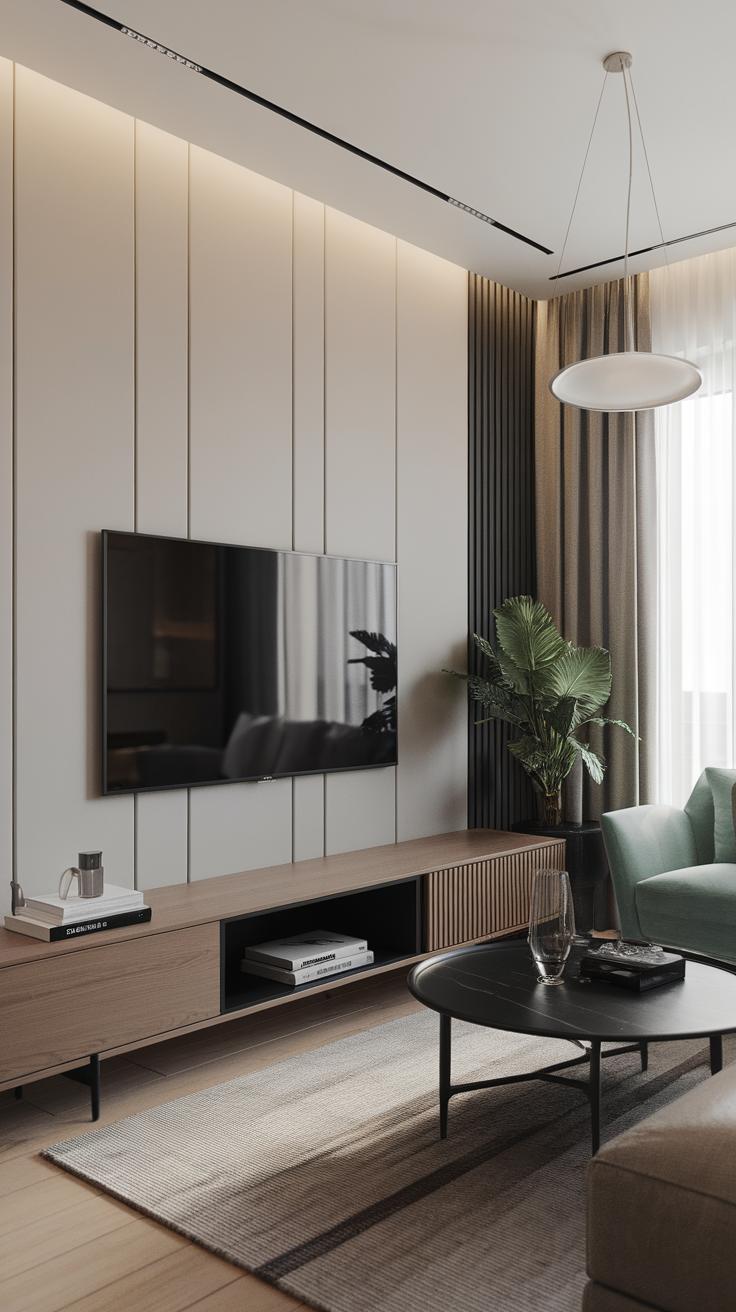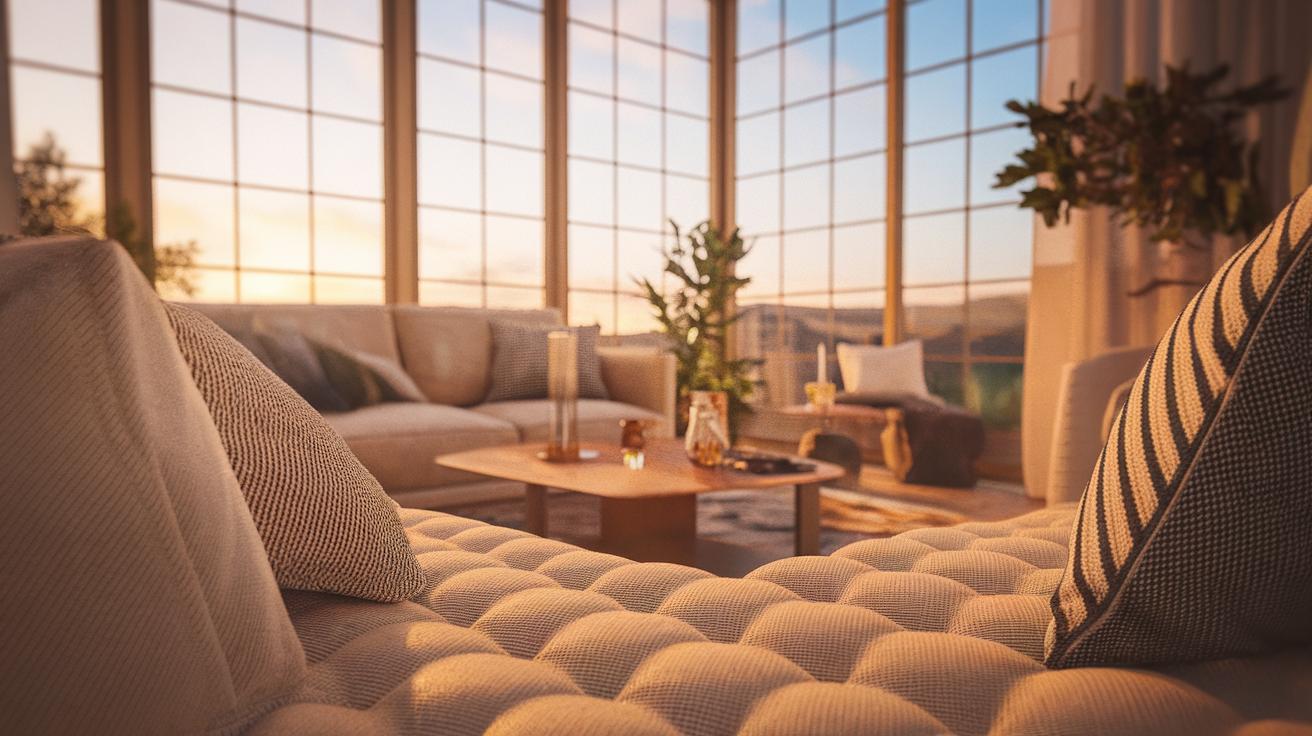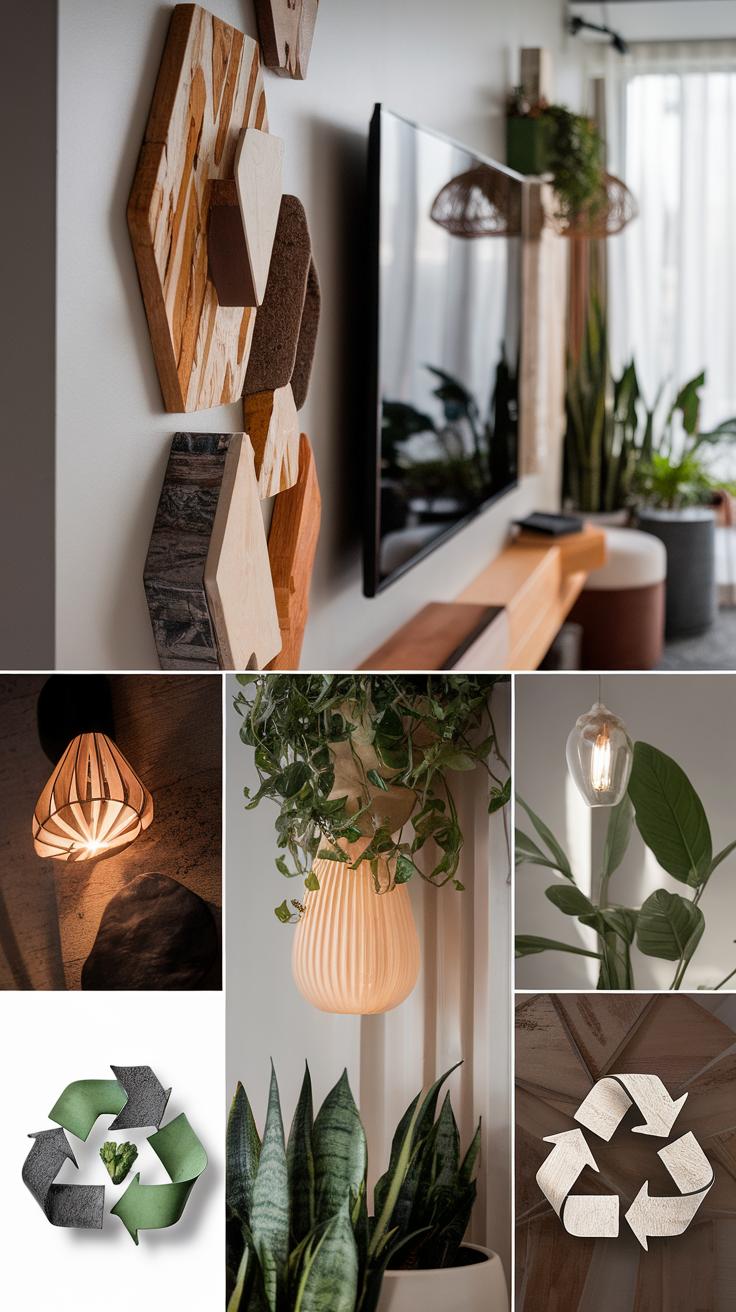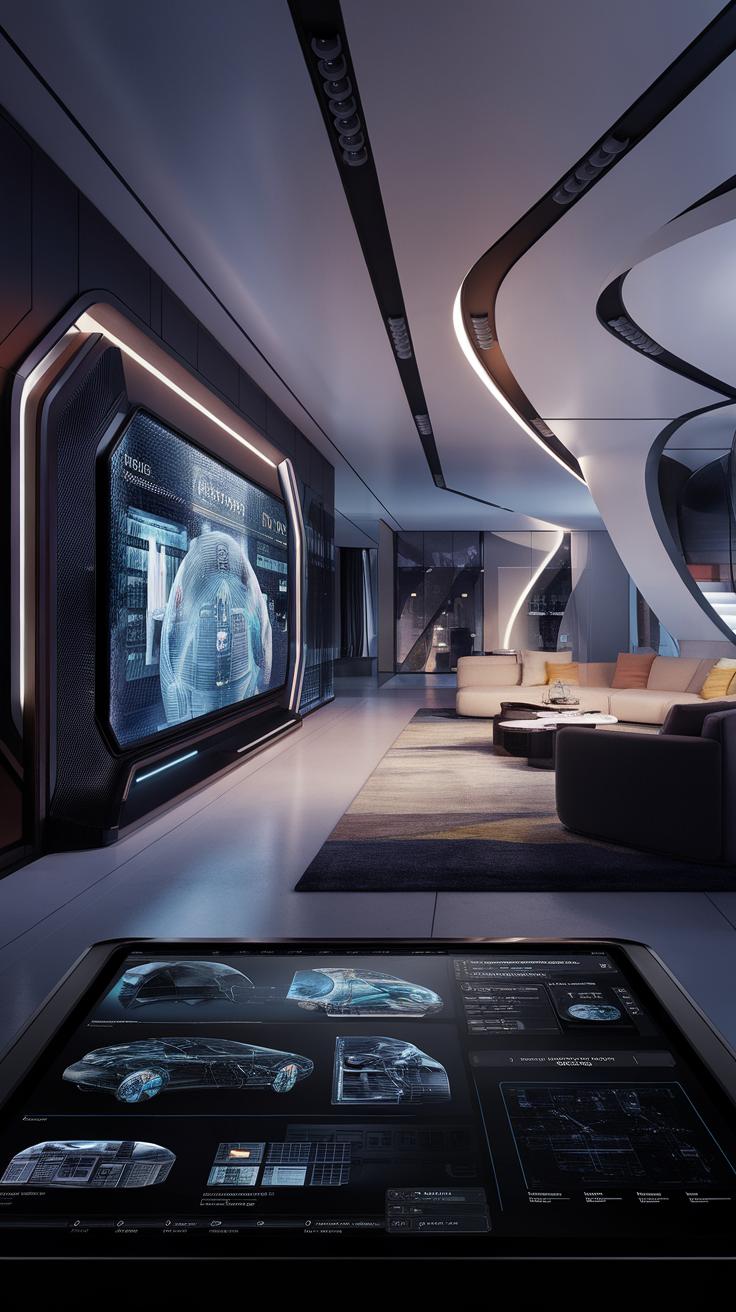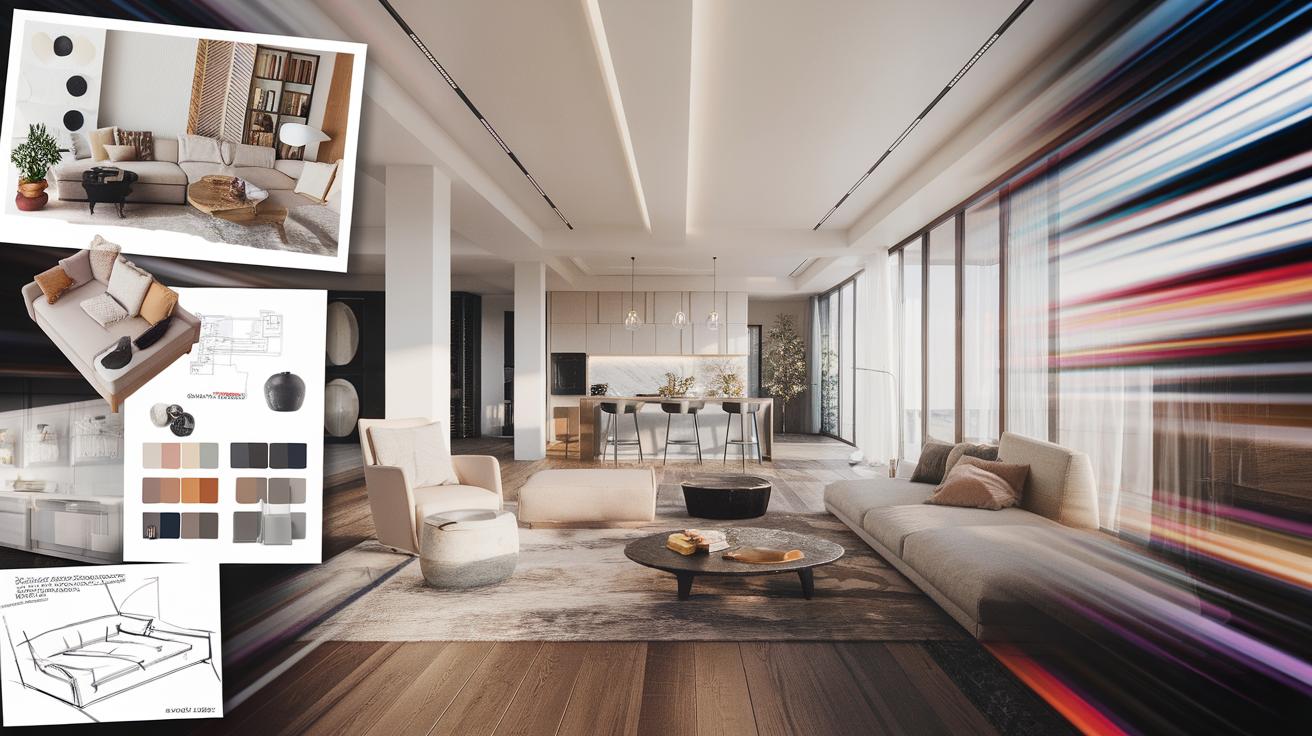Introduction
TV wall design has evolved beyond mere functionality to become a crucial aspect of aesthetic appeal in modern living spaces. As technology advances and televisions become increasingly slim and sleek, the way we incorporate them into our interior designs must also adapt. This article will explore various innovative approaches to TV wall design, highlighting the importance of creating inviting and stylish environments while ensuring practicality. By understanding the principles of interior design, we can enhance the visual intrigue of our spaces with well-planned TV displays.
The integration of a TV wall design involves more than just placement; it includes considerations of color, texture, and surrounding furnishings. A thoughtfully designed TV wall can serve as a focal point in any room, blending seamlessly with the overall décor while accommodating essential functionalities. This article will guide you through 10 chapters, each delving into different aspects of TV wall design, from layout concepts to material selection, ensuring a comprehensive understanding for homeowners and designers alike.
Understanding TV Wall Design The Integration of Aesthetics and Functionality in Contemporary Interiors
TV wall design encompasses the thoughtful arrangement and selection of elements that incorporate a television into a living space in an aesthetically pleasing and functional manner. This design concept has gained significance in modern interiors, where televisions have transitioned from utilitarian objects to integral design components. A well-executed TV wall design not only serves as a focal point but also reflects the homeowner’s style and enhances the ambiance of the room.
Effective TV wall design harmonizes with overall interior design principles by considering factors such as color schemes, materials, and spatial balance. The use of texture, lighting, and complementary furnishings can elevate the visual interest of a TV wall while ensuring that it complements the surrounding space. This integration promotes a cohesive atmosphere, combining entertainment and elegance seamlessly.
Choosing the Right Layout for TV Wall Design
Examining Layout Options
Creating an impactful TV wall design hinges on selecting a layout that maximizes both functionality and aesthetics. Various mounting strategies can greatly influence how a TV integrates into the surrounding area. For instance, a flush mount directly on the wall provides a sleek, minimalist look, while a recessed installation can make the TV appear as part of the architecture. Surrounding furniture placements also play a critical role in enhancing the viewing experience. Arranging seating to face the TV ensures optimal angles, while strategically placed shelving or cabinetry can add functionality without obstructing sight lines. Considering viewing angles is essential; maintaining a height that aligns the TV comfortably with eye level reduces neck strain, creating an inviting and stylish focal point in the room.
Practical Considerations
In addition to aesthetic appeal, practical considerations must guide the layout decisions. Assessing room dimensions and traffic flow is vital to avoid overcrowding while ensuring comfort and accessibility. Implementing versatile furniture arrangements, such as sectional sofas or swivel chairs, can further enhance the viewing experience. The placement of light sources is another factor that cannot be overlooked, as glare on the screen can detract from enjoyment. Thoughtfully designed layouts that harmonize the TV wall with existing interior decor not only contribute to a cohesive ambiance but also elevate the overall functionality of the space, ensuring that the TV becomes an integral part of the living environment rather than an afterthought.
Material Selection for TV Walls Aesthetic and Practical Choices
Exploring Material Options for TV Wall Design
Constructing a TV wall involves more than just a display unit; it requires thoughtful selection of materials to achieve both aesthetics and functionality. Wood remains a popular choice due to its warmth and versatility. Available in various finishes, it seamlessly integrates into different design styles, from rustic to modern. Drywall is another common option, providing a smooth surface that can be easily painted or textured, allowing for personalized designs tailored to any room. Stone offers a unique elegance, creating a bold statement; its durability makes it suitable for both traditional and contemporary homes.
Innovative Materials to Consider
Glass can bring a modern touch, allowing light to reflect while maintaining a sleek appearance. For an industrial vibe, metal accents like aluminum or steel can add a contemporary feel. Eco-friendly materials, such as reclaimed wood or recycled composites, emphasize sustainability without sacrificing style. Each material brings its own character, impacting the overall design of the TV wall while supporting the functionality needed for a multimedia experience. Selecting the right material ultimately enhances harmony between entertainment technology and interior décor.
Incorporating Lighting into TV Walls Enhancing Aesthetics and Functionality
Understanding the Role of Ambient, Task, and Accent Lighting
Lighting plays a pivotal role in the overall design of TV walls, contributing not only to the aesthetics but also the functionality of the space. Ambient lighting serves as the base layer, providing a soft and even illumination that ensures the room is comfortably lit. This type of lighting is essential for creating a welcoming environment, ensuring that the TV does not serve as a focal point in a dimly lit area.
Task lighting, on the other hand, focuses illumination on specific areas, aiding activities such as reading or playing games nearby. Strategically placed lights can enhance visibility without causing glare on the TV screen, ensuring a seamless viewing experience.
Accent Lighting: Highlighting Design Elements
Accent lighting adds depth and emphasizes the design features of the TV wall, such as artwork, shelves, or the TV itself. Using LED strips or spotlights can create a striking contrast that draws attention to these elements, elevating the overall presentation. Thoughtfully designed lighting not only enhances the visual appeal but also supports the practicality of the viewing experience, making it an indispensable consideration in modern TV wall design.
Integrating Audio within TV Walls Enhancing Aesthetics and Sound Quality
Incorporating Sound Systems Seamlessly
In modern TV wall design, integrating audio systems like soundbars and surround sound components enhances both sound quality and aesthetic appeal. A well-designed audio setup can transform a basic viewing experience into an immersive entertainment environment. One practical approach is utilizing built-in soundbars that blend seamlessly with the TV’s design, providing an unobtrusive look without sacrificing sound performance.
Enhancing Surround Sound Experiences
For a more elaborate audio experience, installing surround sound systems within or around the TV wall offers a captivating auditory presence. Utilizing in-wall speakers allows for a clutter-free environment while optimizing sound distribution throughout the room. Consider mounting these speakers at strategic angles to maximize sound immersion. Careful planning during the design phase ensures that audio components harmonize with other elements of the TV wall, maintaining a cohesive interior aesthetic and enhancing the overall viewing experience.
Smart Technology Integration in TV Wall Design
Enhancing User Experience and Connectivity
Integrating smart technologies into TV wall designs significantly enhances user experience and connectivity. Innovations like voice-controlled assistants can allow users to manage not only their television but also related smart devices through voice commands, simplifying interactions. Seamless integration with smart home systems enables functionality such as adjusting lighting or temperature directly from the TV interface, creating a cohesive environment for viewing.
Wireless connectivity options, including Wi-Fi and Bluetooth, expand the capabilities of TV walls. Users can stream content from various devices without the clutter of cables, fostering a cleaner aesthetic. Moreover, smart TVs equipped with apps grant access to streaming services, social media, and gaming, creating a versatile entertainment hub. This fusion of technology and design reflects a modern lifestyle, prioritizing both convenience and aesthetic appeal in home environments.
Personalizing Your TV Wall Design
Art and Displays
Incorporating art into TV wall design goes beyond framing the screen; it involves creating a visual narrative that reflects personal style. Custom artwork, prints, or even family photos can be arranged around the television to create a gallery-like effect. This approach not only frames the screen but also transforms the wall into a focal point of the room. Displays can include shelves for showcasing collectibles or decorative items, adding depth and personality. Consider integrating lighting that highlights both the TV and the surrounding decor, enhancing the overall ambiance and elevating the visual appeal of the space.
Accessories and Functional Features
Accessories play a pivotal role in personalizing TV wall designs. Wall-mounted speakers, digital frames, or even a clever arrangement of bookshelves can complement the television while providing functionality. Choosing furniture that harmonizes with the TV wall—like a stylish console or media cabinet—ensures that practicality is not sacrificed for aesthetics. Additionally, integrating adjustable mounts allows for optimal viewing angles. When combined thoughtfully, these elements create a cohesive design that encapsulates individual preferences, making the TV area not just a tech hub but also an integral part of home decor.
TV Wall Design for Smaller Spaces
Maximizing Aesthetics and Functionality
Creating a functional yet stylish TV wall design in smaller rooms hinges on strategic planning and clever use of space. One effective approach involves integrating built-in shelving to house media devices, books, or decorative objects, which not only saves floor space but also adds depth and character to the wall. Selecting a sleek, wall-mounted TV can further enhance the open feel of the room, allowing for a minimalist design that doesn’t overwhelm the area.
Utilizing light colors and reflective surfaces can amplify the perception of space; these choices brighten the room, making it both inviting and visually appealing. Incorporating modular furniture offers flexibility, while artwork or decorative panels can be strategically placed to complement the television without competing for attention. This thoughtful balance of practicality and aesthetics transforms compact areas into cozy, stylish entertainment hubs.
Sustainable Materials for TV Walls Stylish Solutions for EcoFriendly Design
Eco-Conscious Choices in TV Wall Design
Incorporating sustainable materials into TV wall design not only enhances aesthetics but also promotes environmental responsibility. Bamboo has gained popularity for its rapid regrowth and durability, creating an elegant look while reducing deforestation impacts. Reclaimed wood presents another striking option, offering unique textures and histories that add character to any space.
Innovative and Sustainable Alternatives
Beyond traditional materials, recycled metal and glass are becoming mainstream choices, allowing for striking visual appeal with a minimal carbon footprint. Installing feature walls made from recycled composite tiles provides versatility in design while emphasizing sustainability. These choices ensure that style does not come at the expense of the planet’s well-being, bridging the gap between modern design and ecological mindfulness.
The Future of TV Wall Design Speculating on Advancements in Style and User Experience
Innovative Technologies Shaping TV Walls
As technology continues to evolve, the future of TV wall design is poised for remarkable advancements. Flexible OLED screens, which can bend and contour to various surfaces, are already making waves in the industry. This innovation allows for seamless integration into walls, providing new avenues for immersive experiences. Furthermore, advancements in augmented reality could enable users to overlay digital information onto their physical spaces, thus creating interactive environments that blend entertainment and functionality. Such technology will likely redefine how viewers engage with media, transforming traditional passive viewing into a more dynamic form of interaction.
Aesthetics and User Experience Enhancements
Style will also play a crucial role in the future of TV wall design. Customizable frames and mounting systems will allow for a more personalized aesthetic, catering to diverse tastes and home décor. Expect to see smart surfaces that change appearances or colors based on mood or lighting conditions, making the TV wall a true extension of the homeowner’s personality. Additionally, voice-activated controls and intuitive interfaces are likely to enhance user experience, enabling seamless navigation through content and settings while ensuring the technology remains unobtrusive. These advancements will create an engaging space that harmoniously blends advanced technology with artistic expression.
Conclusions
TV wall design serves as a vital component in enhancing both the practicality and aesthetics of a living space. Through a thoughtful approach to layout, material selection, lighting, and the integration of smart technologies, homeowners can create TV walls that not only serve their functional purpose but also elevate the overall ambiance and style of the room.
As we continue to see advancements in technology and design, the possibilities for TV wall designs will expand, offering even more innovative solutions to meet diverse preferences and needs. By remaining mindful of both current trends and future innovations, individuals can create TV wall designs that truly reflect their personal style while enhancing the viewing experience in their homes.




